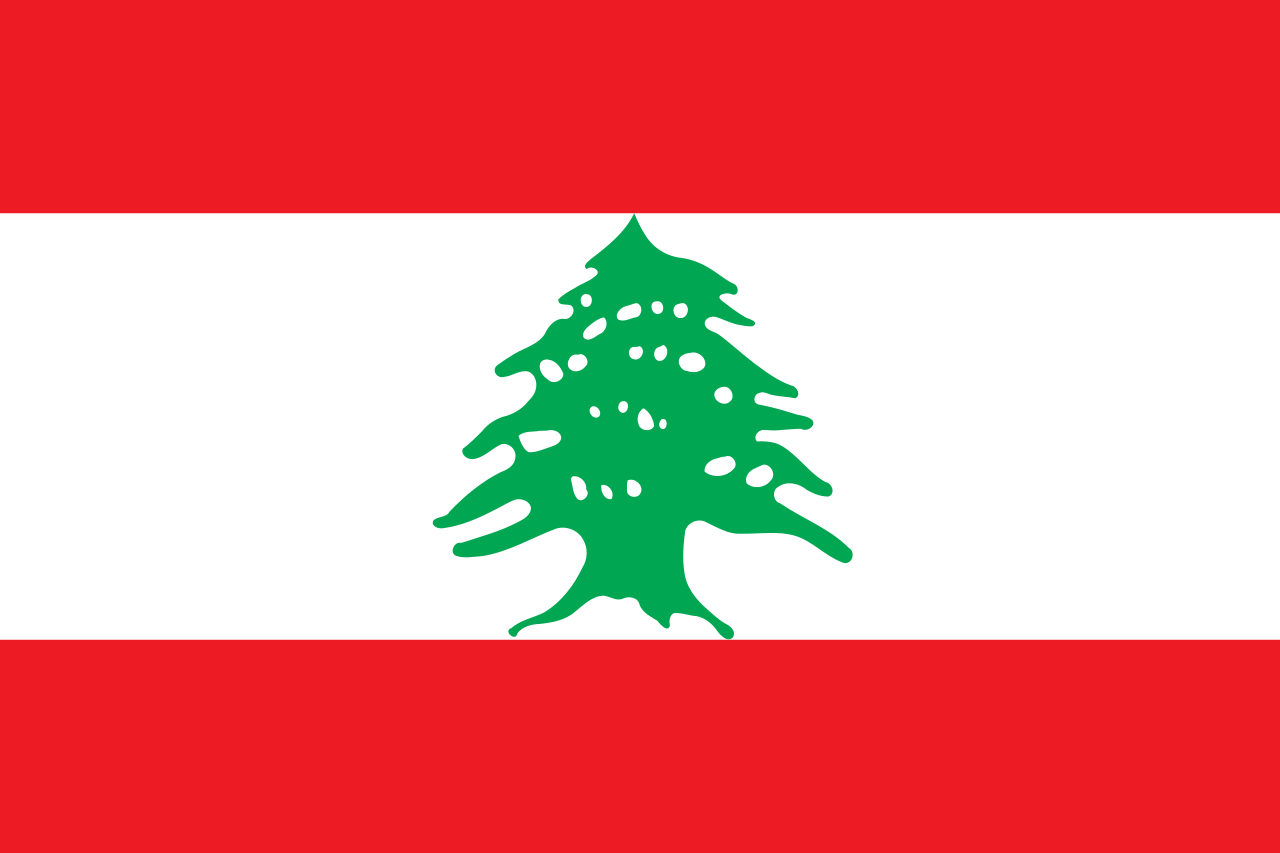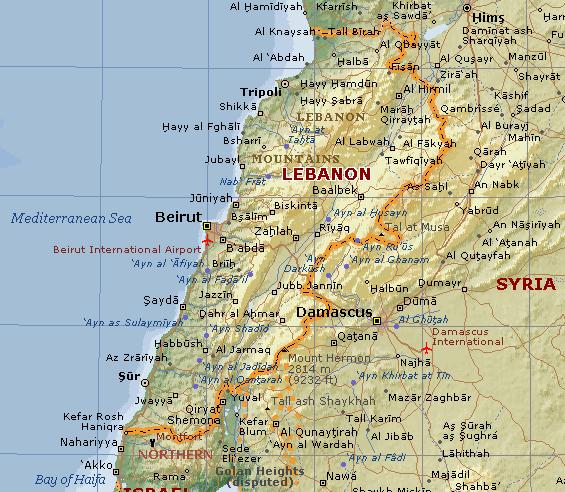Lebanon and its capital, Beirut is a mountainous country in the Levant with a coastline on the eastern Mediterranean Sea; it borders Palestine in the south and Syria in the north. The Anti-Lebanon mountain range forms long stretches of the border between Lebanon and Syria in the east. The country also shares maritime borders with Cyprus.
The smallest nation on the Asian mainland covers an area of 10,400 km², compared it is about one-third the size of Belgium or about one-third the size of the US state of Maryland.
Lebanon Population clock (live)
| 7,764,155 | Current population |
| 3,790,383 | Current male population (48.8%) |
| 3,973,772 | Current female population (51.2%) |
| Species | Admin unit | Population | Units | Number of establishments | Units |
|---|---|---|---|---|---|
| Birds | The Whole Country | 62000000 | Animals | Establishments | |
| Buffaloes | The Whole Country | 0 | Animals | 0 | Establishments |
| Camelidae | The Whole Country | 80 | Animals | Establishments | |
| Cats | The Whole Country | 7300 | Animals | Establishments | |
| Cattle | The Whole Country | 77000 | Animals | Establishments | |
| Dogs | The Whole Country | 9800 | Animals | Establishments | |
| Equidae | The Whole Country | 3800 | Animals | Establishments | |
| Goats | The Whole Country | 640000 | Animals | Establishments | |
| Sheep | The Whole Country | 640000 | Animals | Establishments | |
| Swine
|
The Whole Country
|
18000
|
Animals
|
|
Establishments
|
Agriculture
Agriculture in Lebanon is the third most important sector in the country after the tertiary and industrial sectors. It contributes nearly 7% to GDP and employs around 15% of the active population. Main crops include cereals (mainly wheat and barley), fruits and vegetables, olives, grapes, and tobacco, along with sheep and goat herding. Mineral resources are limited and are only exploited for domestic consumption. Lebanon, which has a variety of agricultural lands, from the interior plateau of the Beqaa Valley to the narrow valleys leading down to the sea, enables farmers to grow both European and tropical crops. Tobacco and figs are grown in the south, citrus fruits and bananas along the coast, olives in the north and around the Shouf Mountains, and fruits and vegetables in the Beqaa Valley. More exotic crops include avocados, grown near Byblos, and hashish (a major crop in the Beqaa Valley).
Lebanon’s agriculture, which offers fertile land, landscaped terraces, and fresh and healthy produce, faces several challenges in recent years. Improper agricultural practices leading to soil erosion and impoverishment, depletion of underground water resources, water pollution and health impacts from inappropriate use of pesticides and fertilizers, and environmental pollution from haphazard dumping of slaughter waste and animal farms are from the main problems of this sector. Agriculture is also diminishing to rampant urbanization, such as in the coastal plains and in parts of the Beqaa Valley. The government’s policies appear to be targeting the increase in the availability of water irrigation (especially in the South) and controlling the use of pesticides, with no or little investment or incentives for water- and soil-conserving irrigation techniques. The private sector is gradually taking advantage of new but small-scale opportunities offered by organic farming and high-value agricultural produce.
Livestock
Livestock production in Lebanon is an important activity, particularly in mountainous areas and in the Baalbek–Hermel area on the eastern mountain chain where soil fertility is relatively low. While the number of goats has been relatively stable for more than two decades, sheep production has increased sharply. In recent years, livestock production (goats and sheep) has relied increasingly on feed blocks and feed supplements, thereby reducing dependence on wild grazing and ultimately leading to more sedentary animal production. Bovines and dairy production are becoming increasingly popular. In the past five years, several medium-to large-scale dairy farms have been established in the North and in the Beqaa. Several grant and loan agreements (proposed by organizations such as USAID) have encouraged farmers to expand dairy production.
Fishing
In a 1999 report done by the “Regional Socio-Economic Development Program for South Lebanon” indications reveal that Lebanon has 3,000 to 4,000 fishermen. Annual fish production in 1996 doubled in average over a phase of ten years, with production amounting to 4,485 tonnes (4,110 tonnes of sea fish and 375 tonnes of freshwater fish, mostly in fish farms). Fishing in rivers has relatively small importance in Lebanon with productions significantly taking place in the Lake Qaraoun (about 30 tonnes per year of mainly carp and trout production) and other rivers such as the Litani and Nahr Ibrahim.
While sea fish production in Lebanon is compared to that of neighboring countries on a km of coastline basis, freshwater fish production continues to lag behind. The absence of sea fish breeding along the coast due to strong coastal currents has been substituted by offshore fishing of pelagic fish (such as Tuna, Bluefish, etc.) using draglines. This type of fishing has become trendy in the past decade, mostly among sports amateurs equipped with motor speedboats.
Environment
One of the major environmental issues in Lebanon is water supply. The country has greater water resources than many other Middle Eastern countries; however, it is at increasing risk of shortages, particularly during the dry summers. This is due to a lack of storage capacity, increasing demand, and climate change. Large-scale projects to improve water supply is funded by the government and by foreign agencies and include the Greater Beirut Water Supply Project and the Litani River Authority. A large number of environmental non-government organizations have been established in Lebanon.
Climate
Recently, not only has rainfall severely declined in Lebanon, but the rising climate has also been affecting the amount of water available. It is estimated that about 50% of the rainfall evaporates leaving people of Lebanon little to work with. As a result of climate change, temperatures have been rising, which means more water lost to evapotranspiration. Losing the water produced by rainfall to evapotranspiration then creates a higher demand for irrigation in farmlands. While agriculture has been suffering the most from the drought, Lebanese households are also expected to go through further water rationing as the dry season arrives.
Lebanon Delegate
President of the WOAH Regional Commission for the Middle East
Veterinarian
Director
Animal Resources Department
Ministry of Agriculture
Beyrouth
LEBANON

